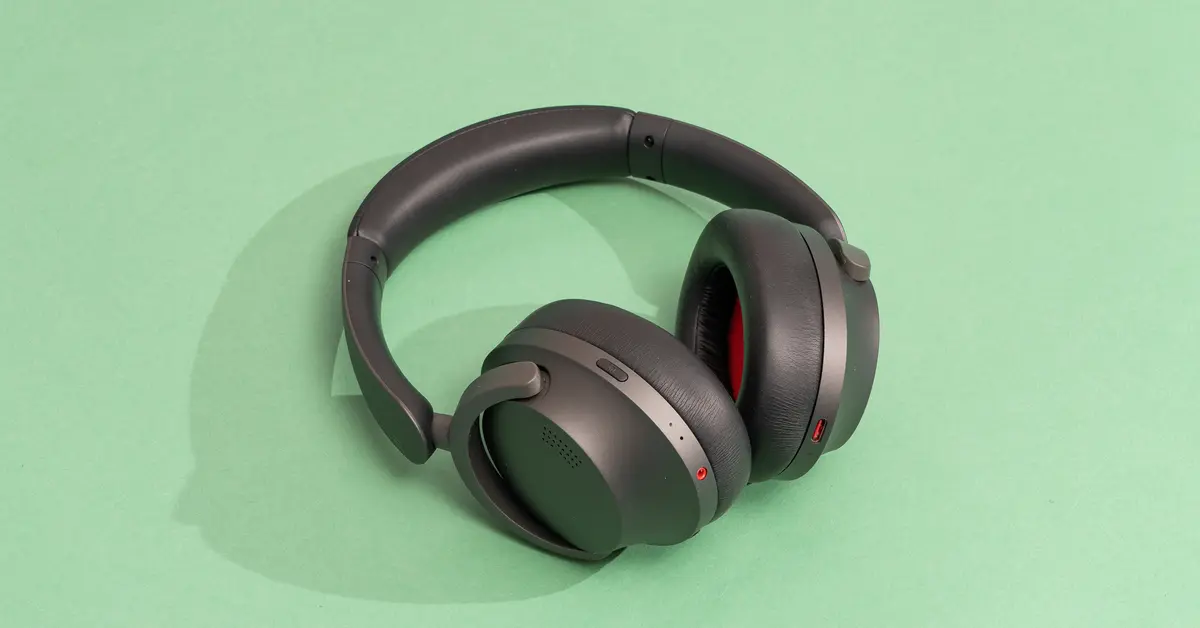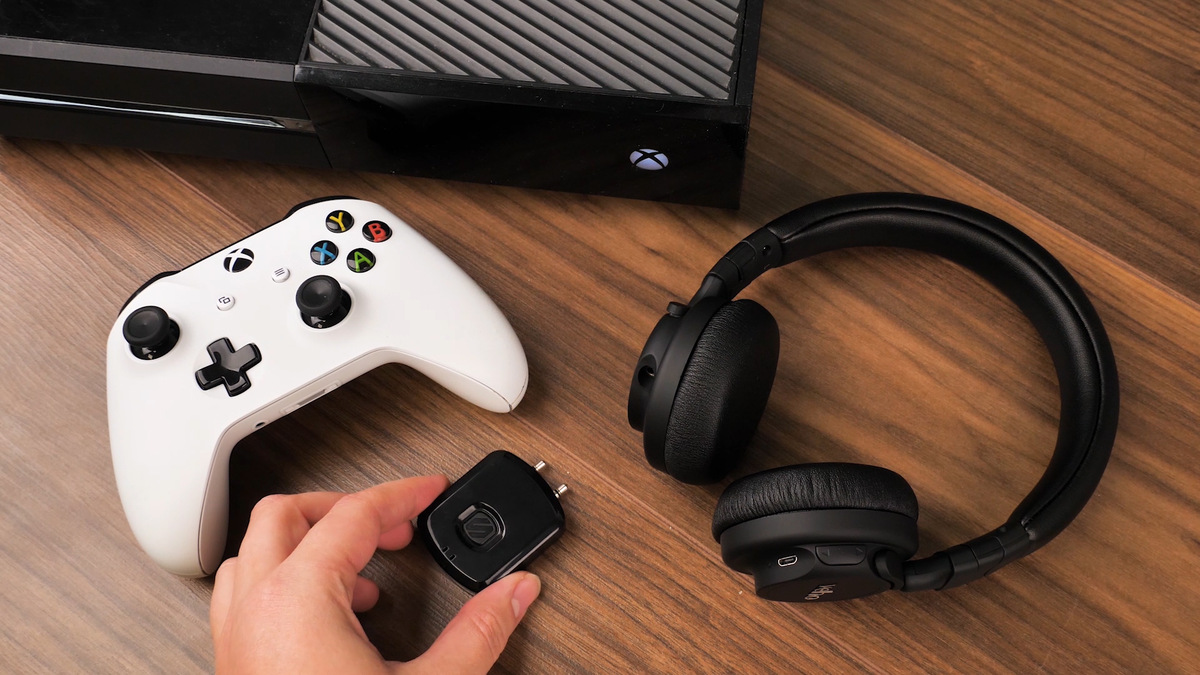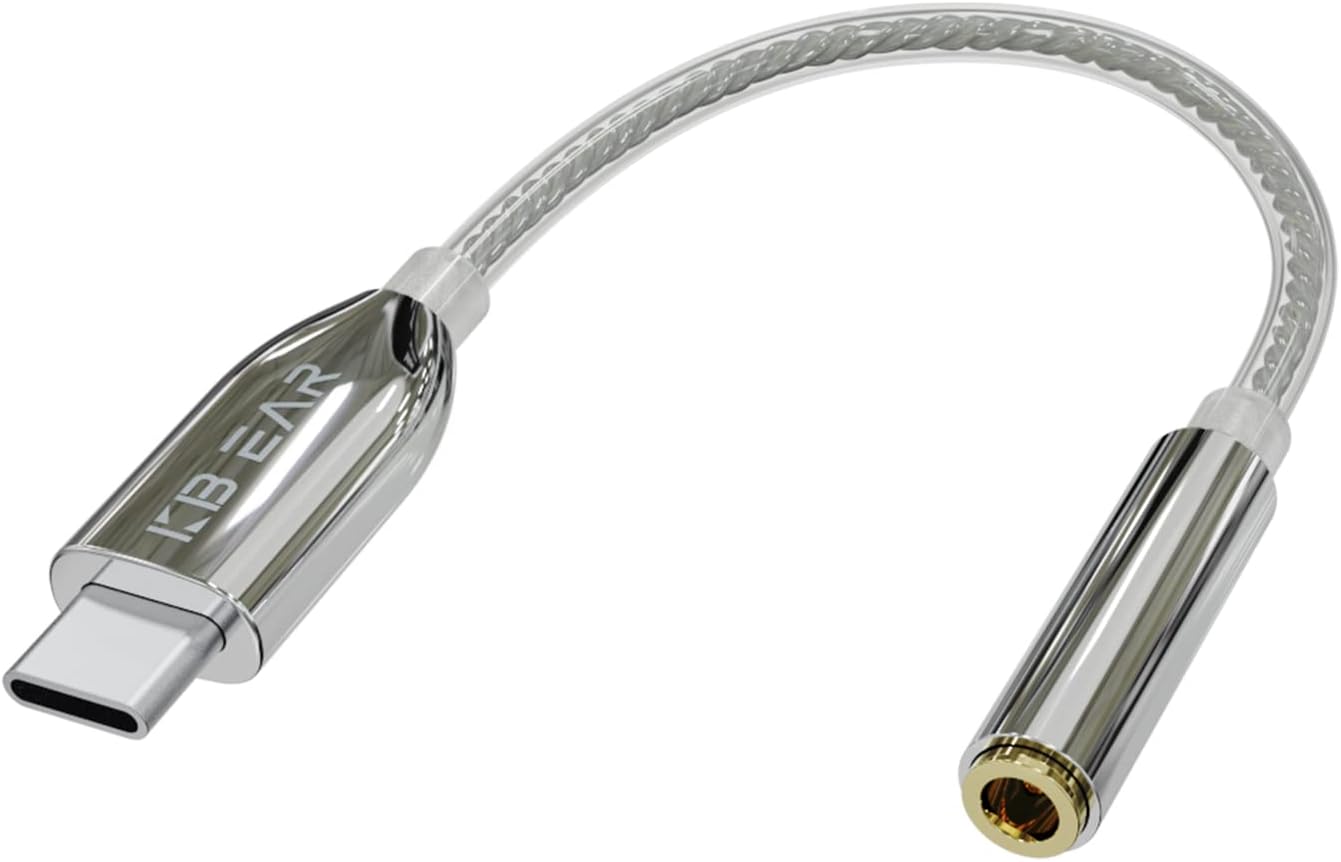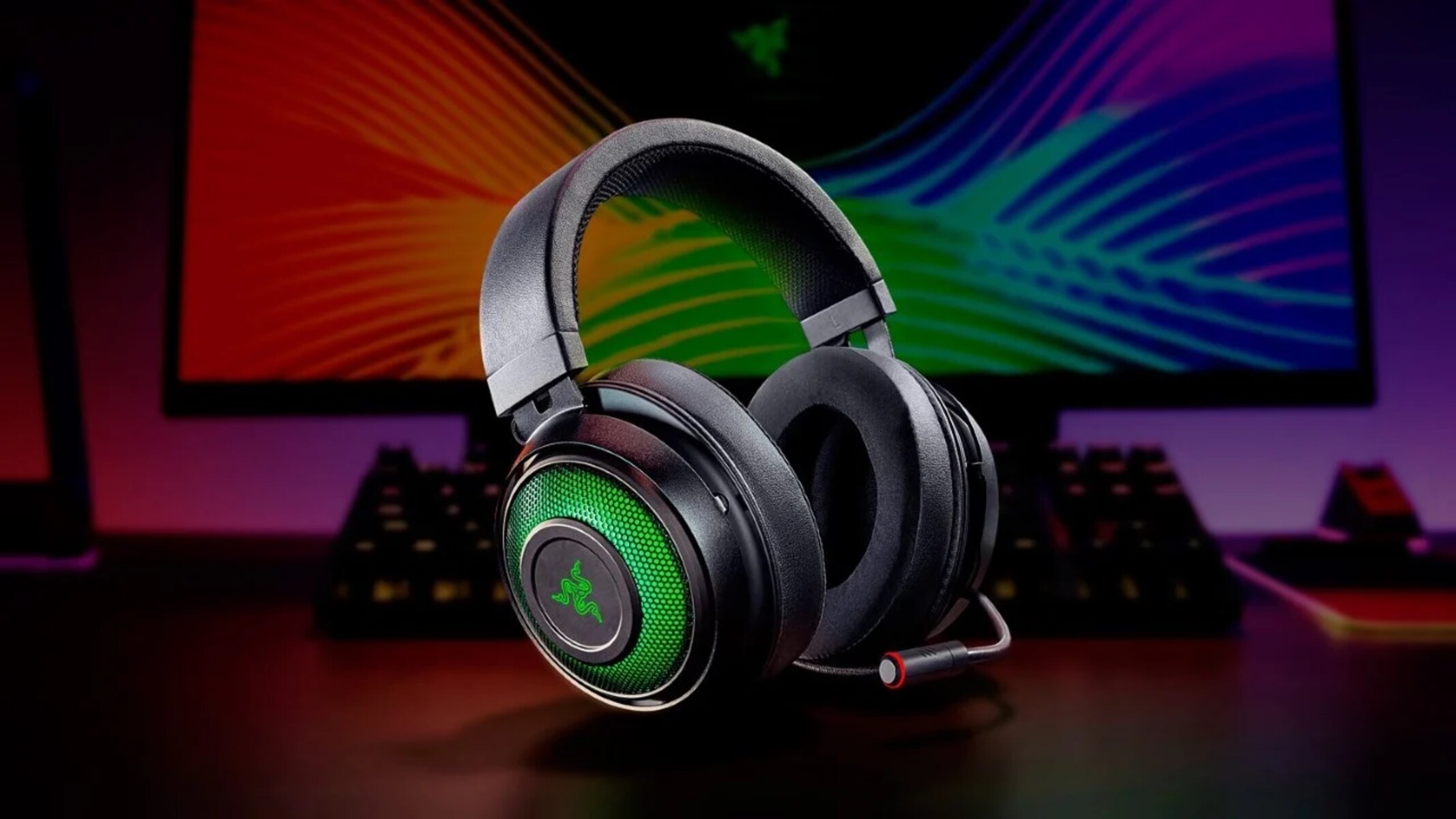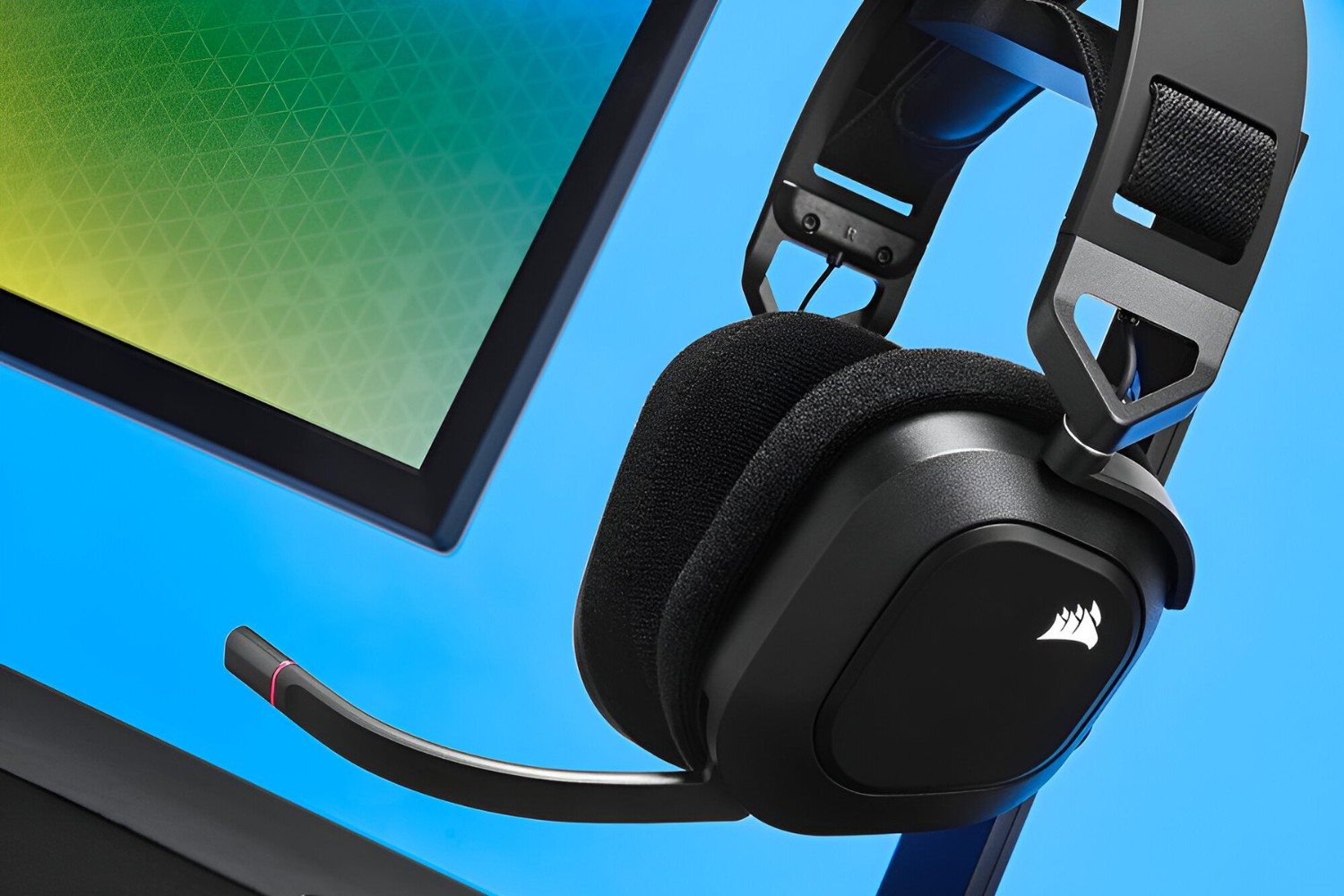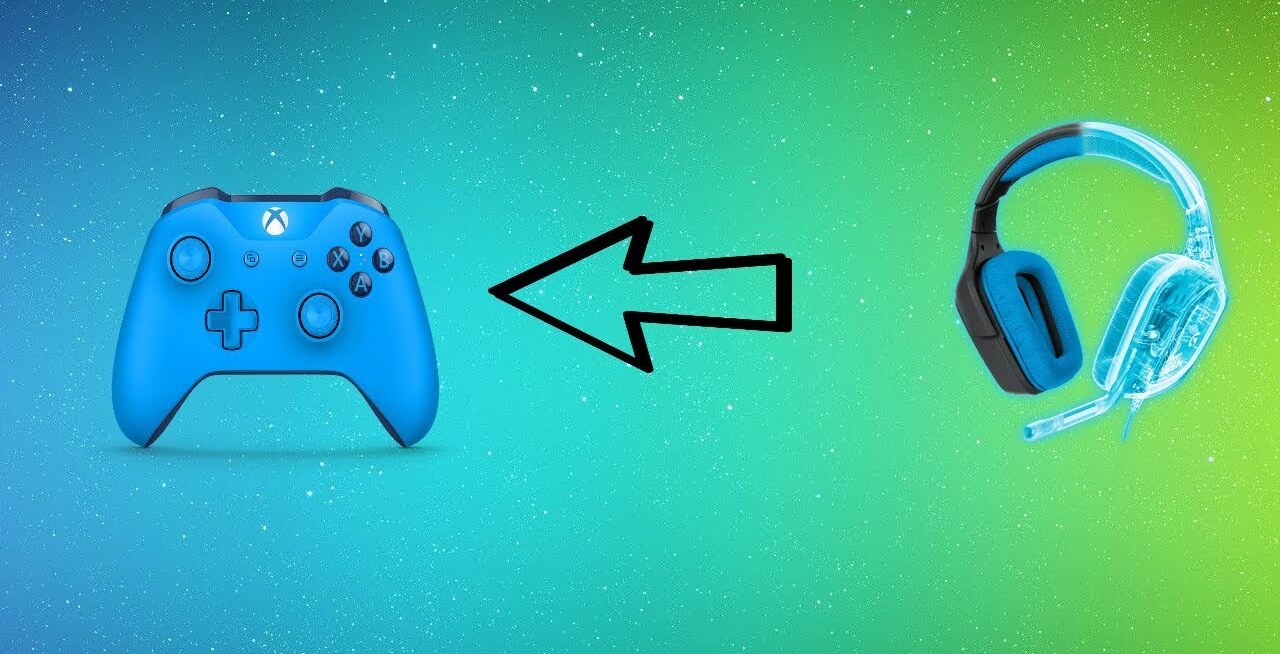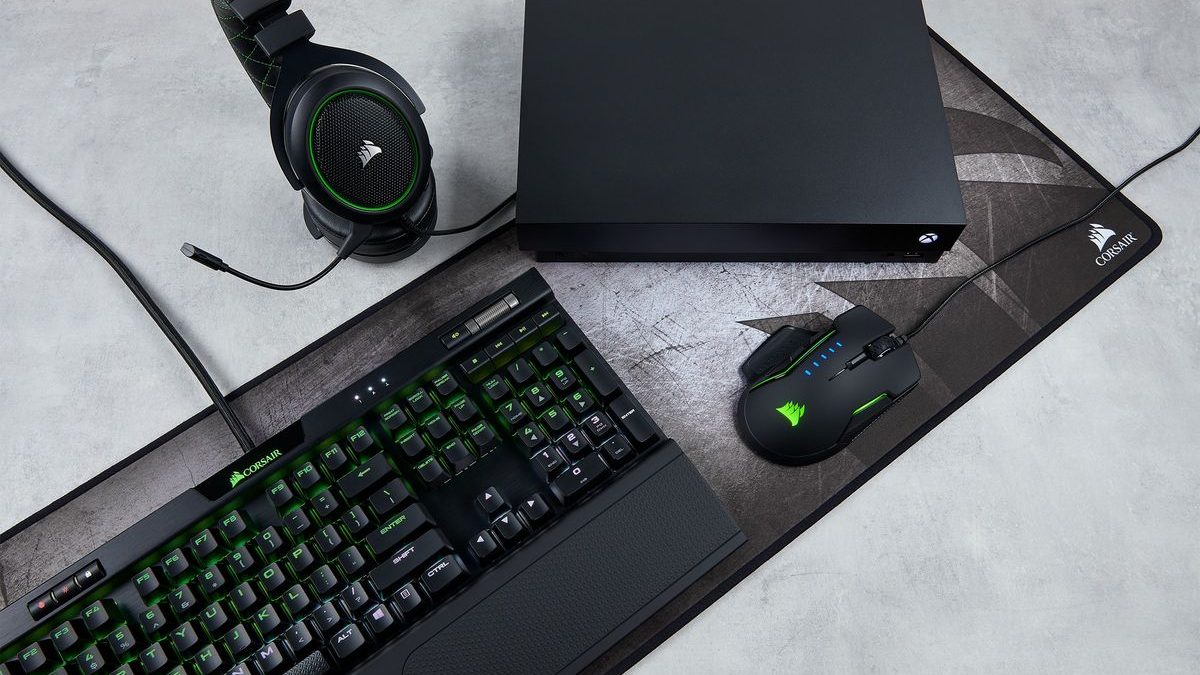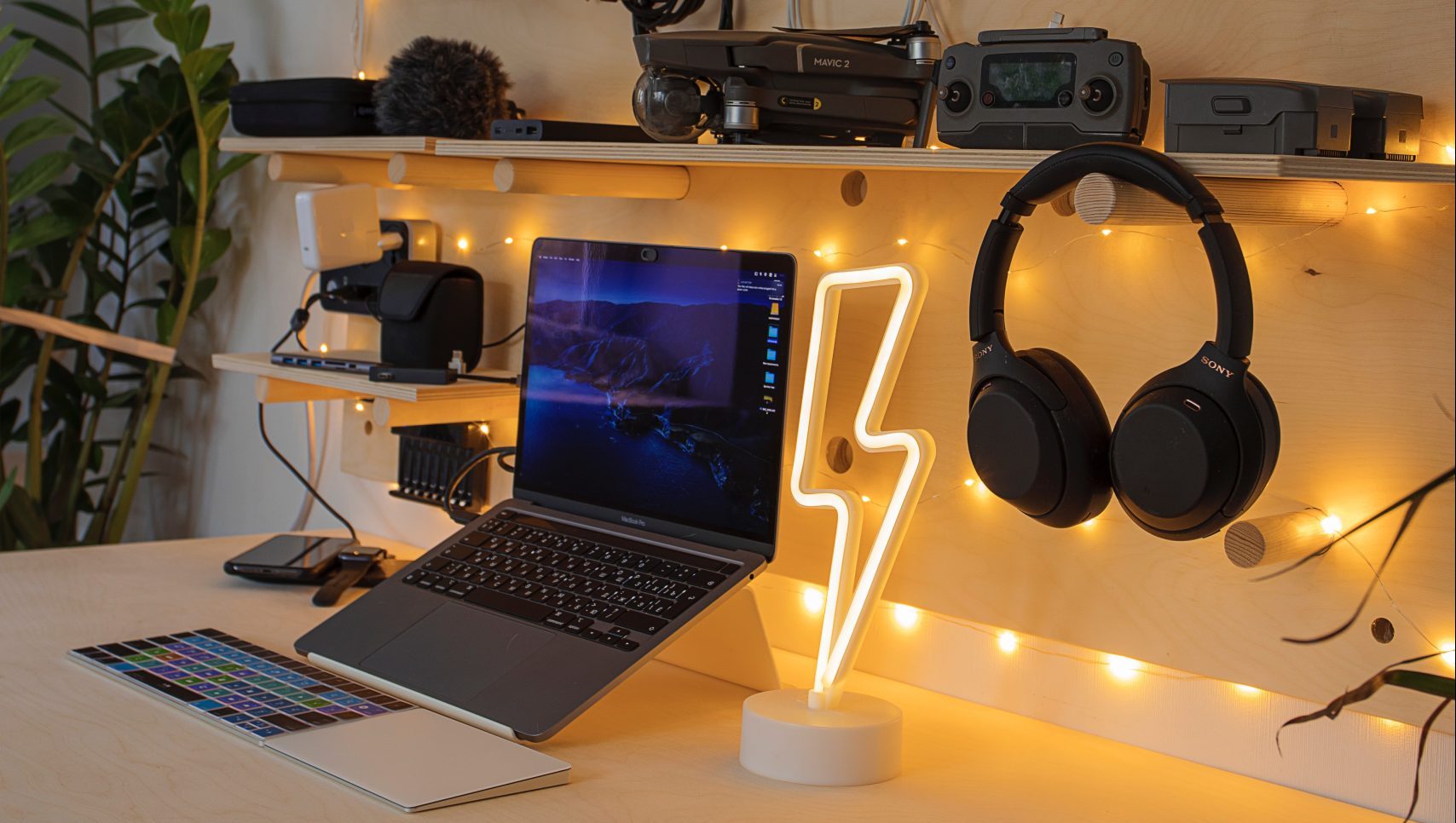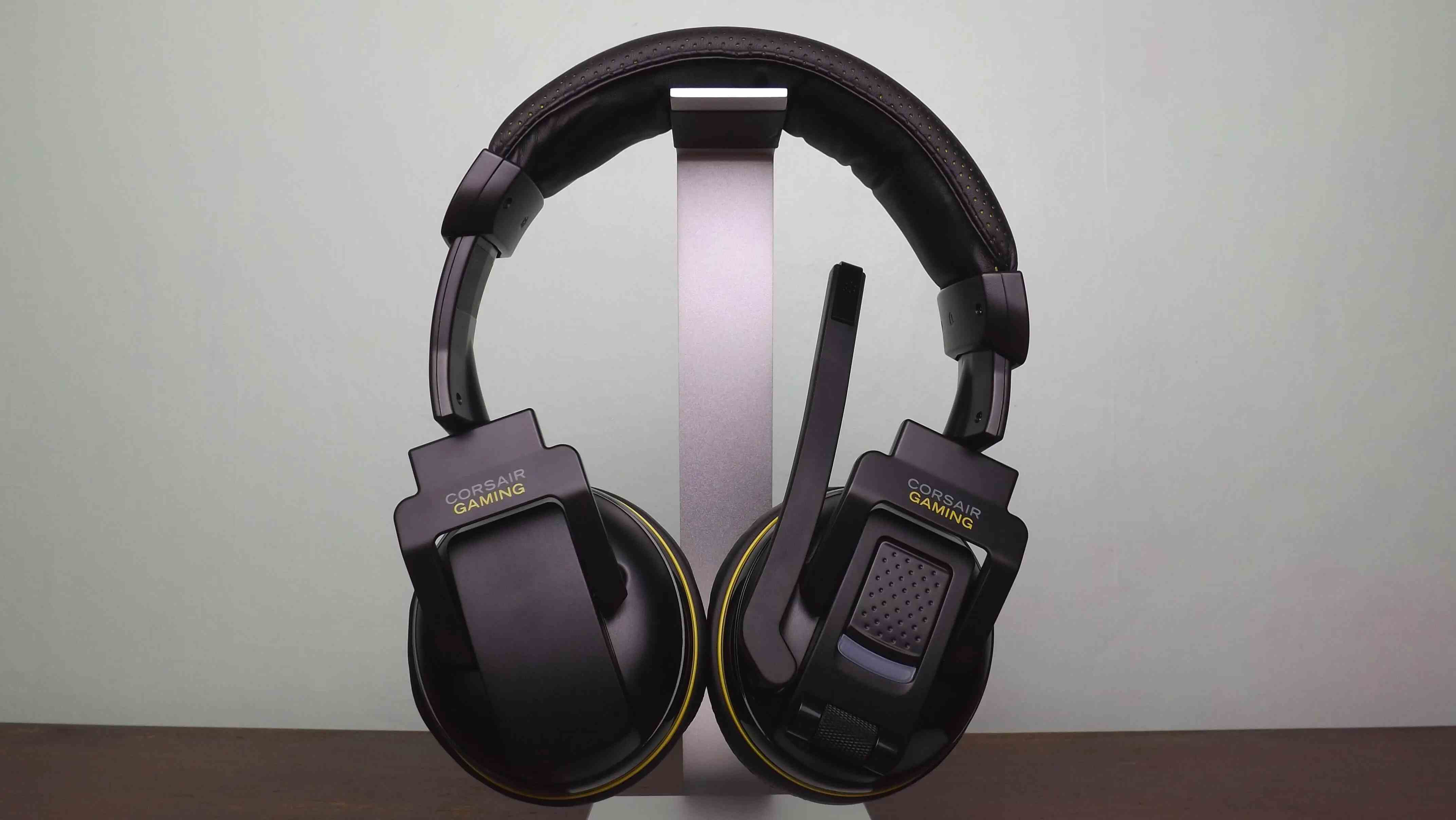Introduction
Wireless technology has revolutionized the way we interact with our gadgets, and one of the most liberating applications of this innovation is in the realm of headsets. The days of being tethered to your device by a cord are long gone, as wireless headsets offer unparalleled freedom and convenience. Whether you're a multitasking professional, a fitness enthusiast, or a casual user, the benefits of using a wireless headset extend far beyond the absence of tangled wires.
In this article, we'll delve into the world of wireless headsets, exploring their functionalities, benefits, and the process of selecting and setting up the right headset for your needs. With the rapid advancements in wireless technology, the market is inundated with a myriad of options, each boasting unique features and capabilities. Understanding the nuances of wireless headsets can empower you to make an informed decision and maximize the potential of this liberating gadget.
By the end of this article, you'll be equipped with the knowledge to seamlessly integrate a wireless headset into your lifestyle, whether it's for work, leisure, or fitness pursuits. So, let's embark on this wireless journey and uncover the myriad possibilities that come with using a headset without limits.
Understanding Wireless Headsets
Wireless headsets, also known as Bluetooth headsets, have become an indispensable gadget for individuals seeking freedom from the constraints of traditional wired headphones. These headsets utilize wireless technology, typically Bluetooth, to establish a seamless connection with a variety of devices, including smartphones, tablets, laptops, and even smart TVs. Understanding the functionality and capabilities of wireless headsets is essential for harnessing their full potential.
How Wireless Headsets Work
Wireless headsets rely on Bluetooth technology to transmit audio signals from the source device to the headset. Bluetooth, a wireless communication standard, operates on radio waves within the 2.4 to 2.485 GHz frequency range. When paired with a compatible device, the headset establishes a secure and stable connection, allowing for the transmission of high-quality audio without the need for physical cables.
Features and Design
Modern wireless headsets are designed with user convenience in mind. They often feature lightweight and ergonomic designs, making them comfortable for extended use. Many models also incorporate intuitive controls for adjusting volume, skipping tracks, and managing calls directly from the headset. Furthermore, advancements in battery technology have enabled wireless headsets to offer extended playback times, ensuring uninterrupted usage throughout the day.
Audio Quality and Performance
One of the common misconceptions about wireless headsets is a compromise in audio quality compared to wired counterparts. However, with advancements in Bluetooth technology and audio codecs, wireless headsets can deliver impressive sound performance. High-quality models support advanced codecs such as aptX and AAC, ensuring minimal loss in audio fidelity during wireless transmission. Additionally, noise-cancelling and ambient sound modes further enhance the listening experience, making wireless headsets a versatile choice for various environments.
Compatibility and Versatility
Wireless headsets are designed to be compatible with a wide range of devices, making them a versatile audio solution. Whether you're pairing the headset with a smartphone for hands-free calling, connecting to a laptop for immersive video conferencing, or syncing with a smart TV for private entertainment, the seamless connectivity offered by wireless headsets transcends traditional audio limitations.
Understanding the intricacies of wireless headsets empowers users to make informed decisions when selecting a headset that aligns with their lifestyle and preferences. As we delve deeper into the realm of wireless headsets, we'll explore the myriad benefits they offer and provide insights into optimizing the usage of these innovative gadgets.
Benefits of Using Wireless Headsets
The adoption of wireless headsets offers a multitude of compelling benefits that cater to diverse lifestyles and usage scenarios. Here are the key advantages that make wireless headsets a game-changer in the realm of audio accessories:
1. Unparalleled Freedom and Mobility
Wireless headsets liberate users from the constraints of tangled cables, allowing seamless movement and multitasking without being tethered to a device. Whether you're pacing around during a conference call, working out at the gym, or simply enjoying music on the go, the freedom of wireless connectivity enhances convenience and flexibility.
2. Enhanced Productivity and Multitasking
Professionals can capitalize on the hands-free functionality of wireless headsets to boost productivity. Whether it's managing calls while typing up reports, participating in virtual meetings while moving around, or listening to audio briefings during commutes, the ability to multitask without being encumbered by wires fosters efficiency and seamless workflow integration.
3. Immersive Audio Experiences
Wireless headsets are engineered to deliver immersive audio experiences, allowing users to delve into their favorite music, podcasts, or audio content without being anchored to a specific location. Advanced models with noise-cancelling features create a cocoon of audio bliss, blocking out external distractions and elevating the listening experience to new heights.
4. Convenience in Fitness and Active Lifestyles
For fitness enthusiasts and individuals with active lifestyles, wireless headsets are a game-changer. Whether you're hitting the gym, going for a run, or engaging in outdoor activities, the absence of cables eliminates the hassle of managing wires during workouts, ensuring uninterrupted focus on fitness goals while staying connected to motivational playlists or workout guides.
5. Seamless Connectivity Across Devices
Wireless headsets offer seamless connectivity across a myriad of devices, from smartphones and tablets to laptops and smart TVs. This versatility enables users to effortlessly transition between different gadgets, whether it's switching from a work call on a laptop to streaming music from a smartphone, without the need to constantly plug and unplug cables.
6. Ergonomic and Travel-Friendly Design
Modern wireless headsets are designed with user comfort and portability in mind. Lightweight and ergonomic designs, coupled with long-lasting battery life, make them ideal companions for travel, commutes, and extended usage. The absence of tangled cords further enhances the hassle-free portability, making them a go-to accessory for individuals on the move.
7. Enhanced Safety and Hands-Free Calling
Wireless headsets promote safety by enabling hands-free calling, allowing users to stay connected while keeping their hands on the wheel or focusing on other tasks. This feature is particularly valuable for individuals driving or engaging in activities where manual phone handling is impractical or unsafe.
In essence, the benefits of using wireless headsets extend far beyond the elimination of cables, elevating the overall audio experience while seamlessly integrating with diverse lifestyles and usage scenarios. As we delve into the process of selecting the right wireless headset, it's essential to consider these compelling advantages to make an informed choice that aligns with individual needs and preferences.
Choosing the Right Wireless Headset
When it comes to selecting the right wireless headset, it's essential to consider a myriad of factors that align with your specific needs and preferences. The market is replete with a diverse array of wireless headsets, each boasting unique features, designs, and capabilities. By navigating through the following considerations, you can make an informed decision that optimally caters to your usage scenarios and audio preferences.
1. Audio Quality and Codec Support
Prioritize wireless headsets that offer high-quality audio performance, supported by advanced codecs such as aptX, AAC, or LDAC. These codecs ensure minimal loss in audio fidelity during wireless transmission, delivering an immersive listening experience. Additionally, if you're an audiophile or prioritize pristine sound quality, consider models with active noise-cancelling features to further enhance audio clarity.
2. Comfort and Ergonomics
Opt for a wireless headset with a lightweight and ergonomic design, ensuring comfort during extended usage. Adjustable headbands, cushioned ear cups, and breathable materials contribute to a comfortable fit, making the headset suitable for prolonged listening sessions or all-day wear, especially for professionals requiring continuous headset usage.
3. Battery Life and Charging
Evaluate the battery life offered by the wireless headset, considering your typical usage patterns. Look for models with extended playback times and quick-charging capabilities, minimizing downtime and ensuring uninterrupted usage. Additionally, wireless headsets with a convenient charging case or USB-C fast charging support offer added convenience for on-the-go users.
4. Connectivity and Device Compatibility
Ensure that the wireless headset is compatible with a wide range of devices, including smartphones, laptops, tablets, and smart TVs. Seamless Bluetooth pairing, multi-device connectivity, and compatibility with voice assistants such as Siri or Google Assistant can significantly enhance the versatility and usability of the headset across various gadgets and usage scenarios.
5. Built-in Microphone and Call Quality
For professionals or individuals frequently engaging in calls, a wireless headset with a high-quality built-in microphone is essential. Look for features such as noise-cancelling microphones, echo reduction, and voice clarity enhancements to ensure clear and crisp call quality, especially in noisy environments or during outdoor use.
6. Durability and Water Resistance
If you lead an active lifestyle or intend to use the wireless headset during workouts or outdoor activities, consider models with sweat and water resistance. This feature ensures the longevity of the headset and provides peace of mind when using it in challenging environments or during physical activities.
7. Brand Reputation and Reviews
Research the reputation of the wireless headset brand and explore user reviews and ratings to gauge the overall satisfaction and reliability of the product. Established brands with a track record of delivering high-quality audio products often offer a level of assurance regarding performance and customer support.
By carefully considering these factors and aligning them with your specific usage scenarios, you can confidently select a wireless headset that seamlessly integrates into your lifestyle, delivering unparalleled audio experiences without limits.
Setting Up Your Wireless Headset
Setting up a wireless headset is a straightforward process that begins with ensuring compatibility and establishing a seamless connection with your preferred devices. Whether you're using the headset for work, leisure, or fitness activities, the initial setup lays the foundation for a hassle-free and immersive audio experience.
Pairing with Bluetooth-Enabled Devices
The first step in setting up your wireless headset is to pair it with your Bluetooth-enabled devices, such as smartphones, tablets, or laptops. Most wireless headsets feature a simple and intuitive pairing mode, typically initiated by holding down the power button or a dedicated pairing button. Upon entering pairing mode, the headset becomes discoverable to nearby Bluetooth devices, allowing you to locate and connect to it from your device's Bluetooth settings.
Multi-Device Connectivity
For users with multiple devices, such as a smartphone and a laptop, selecting a wireless headset with multi-device connectivity can streamline the setup process. This feature enables seamless switching between paired devices, eliminating the need to repeatedly pair and unpair the headset when transitioning between different gadgets. Once the initial pairing is complete, the headset can effortlessly connect to previously paired devices, offering unparalleled convenience and versatility.
Customizing Settings and Controls
Many wireless headsets offer companion mobile apps or desktop software that allow users to customize audio settings, update firmware, and personalize controls. These applications provide a platform to fine-tune audio preferences, adjust equalizer settings, and configure shortcut controls for tasks such as managing calls, activating voice assistants, or toggling noise-cancelling modes. By leveraging these customization options, users can tailor the headset's functionality to align with their unique usage scenarios and audio preferences.
Firmware Updates and Maintenance
Regular firmware updates are essential for optimizing the performance and compatibility of your wireless headset. Manufacturers often release firmware updates to address potential issues, introduce new features, and enhance overall stability. It's advisable to periodically check for firmware updates through the manufacturer's official website or dedicated software to ensure that your wireless headset remains up-to-date and optimized for seamless functionality.
Testing and Calibration
Once the initial setup is complete, it's beneficial to conduct a brief testing phase to ensure that the wireless headset is functioning as intended. This involves assessing audio playback, microphone clarity, and the responsiveness of controls to verify that the headset aligns with your expectations. Additionally, if the headset features advanced audio modes or noise-cancelling capabilities, calibrating these settings based on your environment and usage preferences can further enhance the overall audio experience.
By following these steps and leveraging the customization options offered by modern wireless headsets, users can seamlessly set up their devices to unlock the full potential of wireless audio technology. The setup process lays the groundwork for a seamless and immersive audio experience, empowering users to harness the freedom and convenience that wireless headsets offer across various facets of their daily lives.
Tips for Using Your Wireless Headset
-
Maintain Battery Health: To ensure uninterrupted usage, it's advisable to monitor the battery health of your wireless headset. Avoid complete discharges whenever possible and recharge the headset before the battery level becomes critically low. Additionally, if you anticipate prolonged periods of non-usage, such as during travel or extended breaks, consider turning off the headset to conserve battery life.
-
Optimize Noise-Cancelling Features: If your wireless headset incorporates noise-cancelling functionality, take advantage of this feature in environments with ambient noise. Whether you're in a bustling office, commuting on public transport, or seeking tranquility in a noisy environment, activating the noise-cancelling mode can significantly enhance the clarity and immersion of your audio experience.
-
Explore Voice Assistant Integration: Many wireless headsets offer integration with popular voice assistants such as Siri, Google Assistant, or Alexa. Familiarize yourself with the voice commands supported by your headset to effortlessly access information, manage calls, and control playback using voice prompts. This hands-free functionality adds an extra layer of convenience to your headset usage, especially when multitasking or on the move.
-
Regular Cleaning and Maintenance: To preserve the longevity and hygiene of your wireless headset, incorporate regular cleaning and maintenance into your routine. Use a soft, damp cloth to gently wipe the ear cups, headband, and controls, ensuring that no moisture enters the internal components. Additionally, if the headset features removable ear cushions, follow the manufacturer's guidelines for cleaning and replacing them as needed.
-
Familiarize Yourself with Controls: Take the time to familiarize yourself with the controls and functionalities of your wireless headset. Whether it's adjusting volume, skipping tracks, or managing calls, understanding the layout and operation of the controls enhances the overall user experience. This familiarity allows for seamless interaction with the headset, minimizing interruptions during usage.
-
Opt for Firmware Updates: Stay informed about firmware updates released by the headset manufacturer and ensure that your device is running the latest software version. Firmware updates often introduce performance enhancements, bug fixes, and new features, contributing to an optimized and reliable headset experience. Regularly checking for updates can help maintain the headset's functionality at its best.
-
Store and Carry with Care: When storing or carrying your wireless headset, exercise caution to prevent damage. Utilize the provided carrying case, if available, to shield the headset from dust, moisture, and potential impacts. If no case is provided, consider investing in a protective pouch or case to safeguard the headset during travel and storage.
By implementing these tips, users can maximize the utility and longevity of their wireless headsets, ensuring a seamless and enjoyable audio experience across various contexts and usage scenarios.
Conclusion
Embracing the wireless freedom offered by modern headsets transcends the mere absence of cables, ushering in a new era of convenience, versatility, and immersive audio experiences. As we navigate the dynamic landscape of wireless technology, the seamless integration of wireless headsets into various facets of our lives has become a testament to the limitless potential of this liberating gadget.
The evolution of wireless headsets has redefined the way we engage with audio content, from immersive music listening to seamless call management and hands-free convenience. The benefits of wireless headsets extend far beyond the realm of audio, permeating into productivity, fitness, and everyday activities. The freedom to move without constraints, the ability to multitask seamlessly, and the immersive audio experiences offered by wireless headsets have become integral components of modern lifestyles.
Selecting the right wireless headset entails a careful consideration of audio quality, comfort, battery life, and compatibility, ensuring that the chosen device aligns with individual preferences and usage scenarios. The setup process, characterized by seamless Bluetooth pairing, customization of controls, and firmware maintenance, lays the foundation for a hassle-free and immersive audio journey.
Moreover, integrating wireless headsets into daily routines warrants a mindful approach, encompassing battery management, noise-cancelling optimization, voice assistant exploration, and regular maintenance to preserve the longevity and performance of the device. By adhering to these best practices, users can maximize the utility and longevity of their wireless headsets, ensuring a seamless and enjoyable audio experience across various contexts and usage scenarios.
As we bid farewell to the constraints of wired connectivity, the wireless revolution continues to empower users with unparalleled freedom and flexibility. Whether it's the professional leveraging hands-free functionality for enhanced productivity, the fitness enthusiast reveling in the convenience of wireless audio during workouts, or the casual user immersing in uninterrupted audio bliss, the wireless headset has become an indispensable companion in the modern era.
In conclusion, the era of wireless headsets heralds a paradigm shift in audio accessibility, offering a symphony of freedom, convenience, and immersive experiences without limits. Embrace the wireless revolution, and unlock a world of audio possibilities, unbound by the constraints of cables and limitations.







